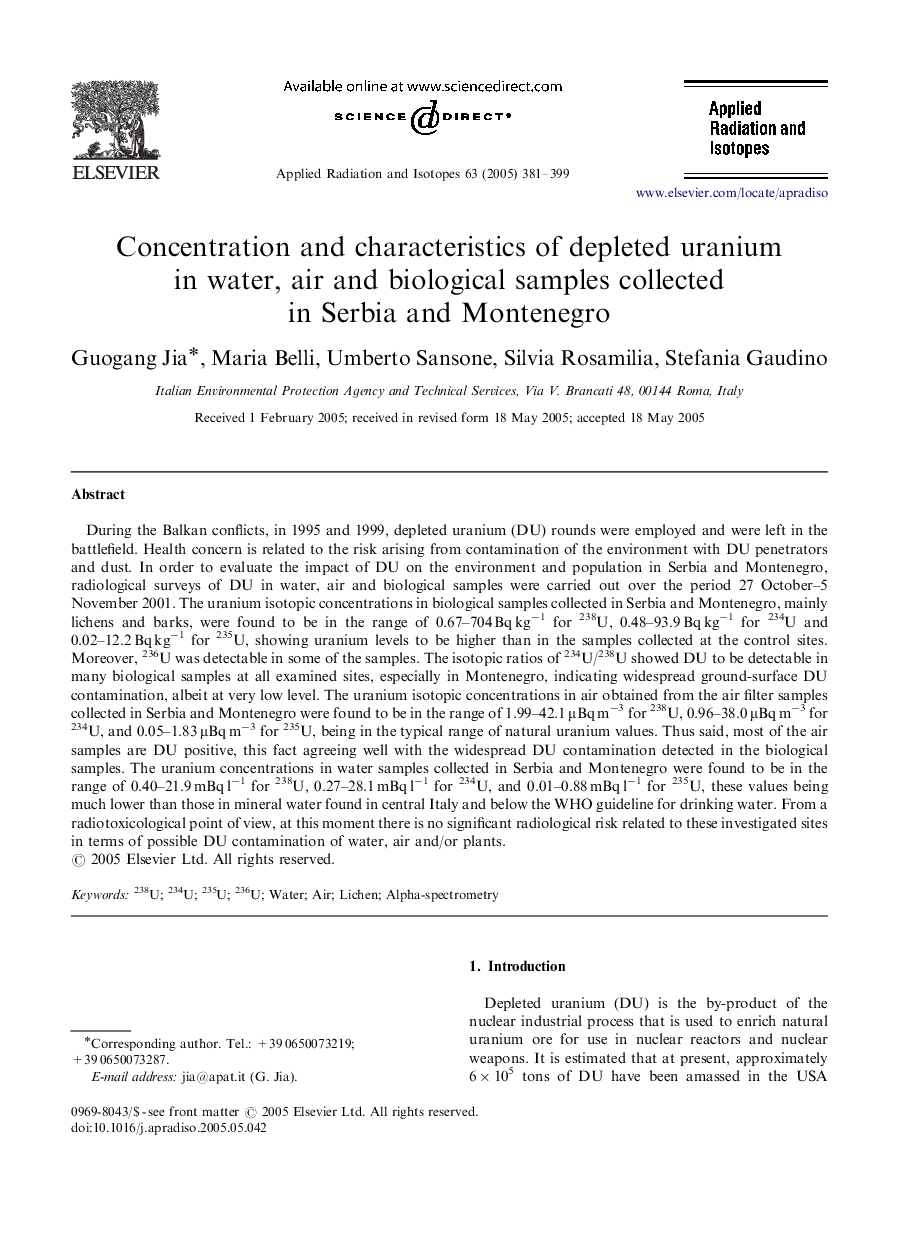| Article ID | Journal | Published Year | Pages | File Type |
|---|---|---|---|---|
| 10729711 | Applied Radiation and Isotopes | 2005 | 19 Pages |
Abstract
During the Balkan conflicts, in 1995 and 1999, depleted uranium (DU) rounds were employed and were left in the battlefield. Health concern is related to the risk arising from contamination of the environment with DU penetrators and dust. In order to evaluate the impact of DU on the environment and population in Serbia and Montenegro, radiological surveys of DU in water, air and biological samples were carried out over the period 27 October-5 November 2001. The uranium isotopic concentrations in biological samples collected in Serbia and Montenegro, mainly lichens and barks, were found to be in the range of 0.67-704 Bq kgâ1 for 238U, 0.48-93.9 Bq kgâ1 for 234U and 0.02-12.2 Bq kgâ1 for 235U, showing uranium levels to be higher than in the samples collected at the control sites. Moreover, 236U was detectable in some of the samples. The isotopic ratios of 234U/238U showed DU to be detectable in many biological samples at all examined sites, especially in Montenegro, indicating widespread ground-surface DU contamination, albeit at very low level. The uranium isotopic concentrations in air obtained from the air filter samples collected in Serbia and Montenegro were found to be in the range of 1.99-42.1 μBq mâ3 for 238U, 0.96-38.0 μBq mâ3 for 234U, and 0.05-1.83 μBq mâ3 for 235U, being in the typical range of natural uranium values. Thus said, most of the air samples are DU positive, this fact agreeing well with the widespread DU contamination detected in the biological samples. The uranium concentrations in water samples collected in Serbia and Montenegro were found to be in the range of 0.40-21.9 mBq lâ1 for 238U, 0.27-28.1 mBq lâ1 for 234U, and 0.01-0.88 mBq lâ1 for 235U, these values being much lower than those in mineral water found in central Italy and below the WHO guideline for drinking water. From a radiotoxicological point of view, at this moment there is no significant radiological risk related to these investigated sites in terms of possible DU contamination of water, air and/or plants.
Related Topics
Physical Sciences and Engineering
Physics and Astronomy
Radiation
Authors
Guogang Jia, Maria Belli, Umberto Sansone, Silvia Rosamilia, Stefania Gaudino,
